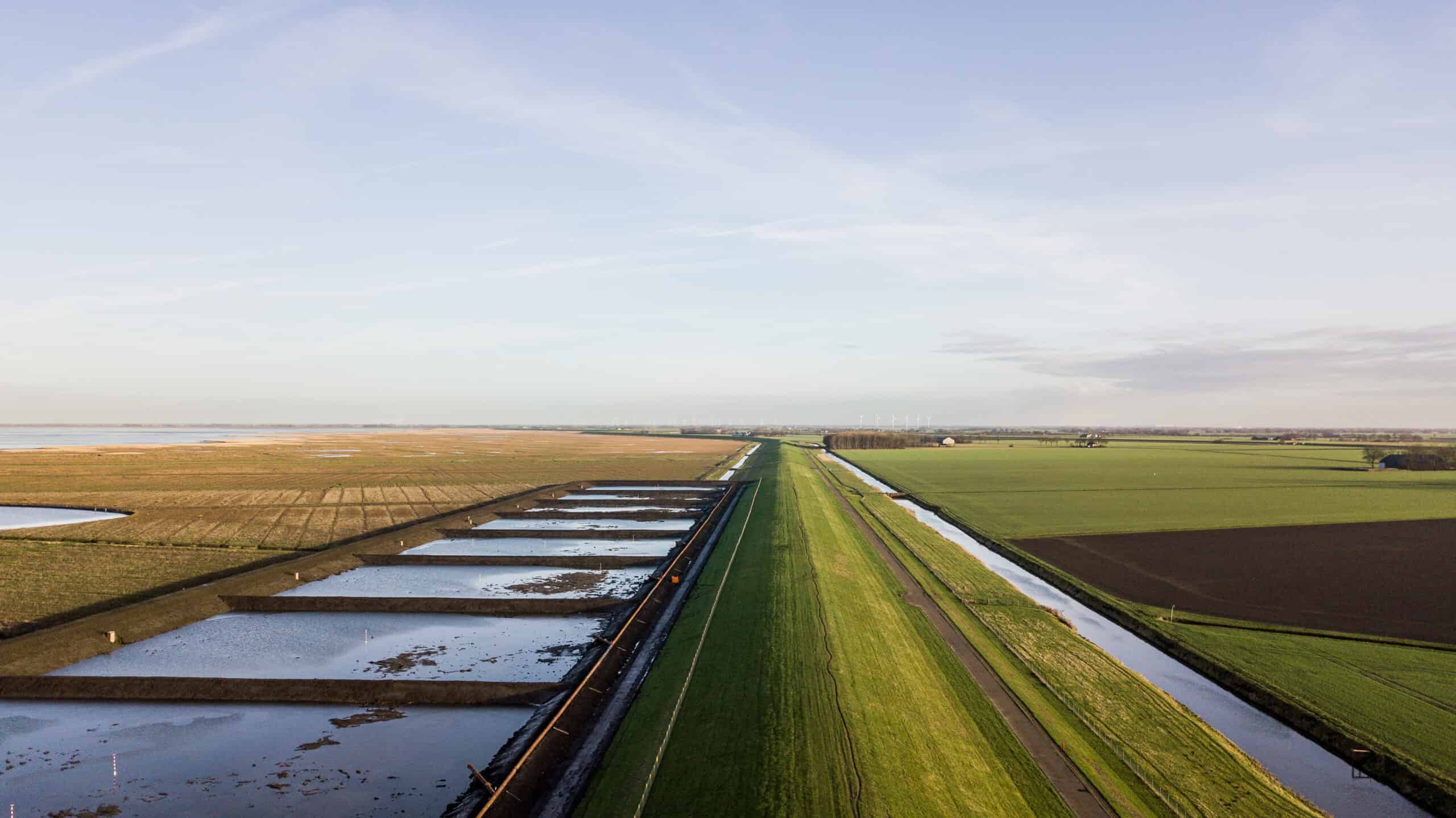Dimitris Dermentzoglou, a PhD student in coastal engineering, investigates whether salt marshes can be a natural solution to coastal protection. That is why he replicates salt marsh vegetation at the TU Delft Waterlab. The university says he hopes his research could provide a sustainable alternative to repeated arch lifts. Press release.
- TU Delft is conducting research on coastal protection using salt marshes as a sustainable alternative
- Salt marshes absorb the tides and reduce the surge of dams
- They provide a natural solution to adapting to rising sea levels
Waves travel from one end to the other through fifty meters of water. Halfway down the flume, waves travel through blades of grass made of rubber. The rising tides cause the blades to rock back and forth. A few meters down the flume, the waves gently break on the angled wooden plank.
Dimitris Termentzoklou uses the flume to investigate whether salt marshes can provide effective coastal protection. „During a severe storm the salt marsh vegetation can absorb some of the wave energy and reduce the height of the incoming waves, making them less likely to pass over the dike,” he says. „But salt marshes are not currently considered when designing coastal defenses.” His research may change that.
Living dams
His research is part of 'Living Dykes’: a multi-year, multi-disciplinary research project into nature-based alternatives to 'hard’ dykes. Living dikes are green dikes with seaward salt marshes that may play an important role in future coastal protection. Dermentzoglou: “Sea level rise significantly reduces the effectiveness of common 'hard dikes’. It means they need to be lifted up. Every few decades, unnatural materials like asphalt must also be replaced.
Dermentzoglou explains that salt marshes could be the solution. „If there is enough sediment, salt marshes will grow with sea level rise.” Salt marshes are coastal landforms that are periodically flooded. Plants such as cordgrass thrive in these conditions and they retain sediment over time, elevating the salt marsh. „But the effectiveness of salt marshes during severe storm conditions has not yet been studied so there is no hard data.”
Before reaching the rubber glass blades, the waves pass over an artificial reef. Continuous erosion often leads to the formation of a cliff at the edge of a salt marsh. This is the area that PhD student Jos Müller and Master’s student Peter Faber from the University of Twente are focusing on in their experimental setup. In particular, they study how the cliff affects local hydrodynamics. Once the waves pass the black rubber plants, they reach the wooden board. Here, master’s student Stijn Lakerveld (TU Delft) uses a camera to measure how far and how high the waves reach the dyke.

Salt Drilling Sludge: Back to Basics, Yet Innovative
50,000 rubber grass blades
For their experiments in the flume, Dermentzoklou and his colleagues had to prepare long wire grass at a scale of 1:10 to measure how well plants are able to absorb wave energy. “Our first challenge was finding the right material, for which I consulted ChatGPT,” he says. „To accurately mimic wave wear, it is critical that the flexibility and movement of the blades match those of real plants.” Extensive testing yielded neoprene, rubber type. „It’s a material commonly used in wetsuits,” he says. Then, he needed 50,000 rubber blades, exactly nine centimeters long, to create a scale model of the salt marsh. Where to get them?
Laboratory technician Peter van der Kock came up with a solution that significantly reduces the amount of manual labor required. Dermentzoglou: „Our technicians are very innovative and they helped us solve many of our problems.” Using a wooden frame shaped like an abacus (counting frame) without the colored beads, hang twenty rubber rolls on the side. Up to two planks of wood spaced exactly nine centimeters apart allowed them to be unrolled at the same time, allowing twenty strands to be cut at once.
One by one, he approached all the faculty’s graduate students to join the 50,000 fibers into the mat. „About twenty colleagues came to help,” Dermentzoklou says brightly. „It’s definitely less of a hassle.” After four long days, all 50,000 'cardgrass’ blades were glued to the mat. „I felt so relieved and fulfilled when it was over,” she says.
White water
Once the test setup is complete, it’s time to turn on the wave generator at the front of the flume and create storm-like waves. On a computer screen, researchers watch the data being collected in real-time—exactly matching the pattern of waves traveling through the glass tank.
The water in the flume is very white. „We add small, hollow spheres of glass to increase the reflectivity of the water,” Dermentzoklou explains. The laser scanner is placed high on a wooden scaffolding – built by lab technicians – and sends laser beams down to the tank below. The water surface reflects beams, allowing observation of the water surface.
Lawn mower
Dermentzoglou enjoys researching in Flume, which he also used in his master’s thesis. „It’s a lot of fun, I love it,” he says. „You can read all the theory about wave hydrodynamics, but this is where you find the real-world physics.”
Dermentzoglou wants to repeat the salt marsh experiment using short blades of grass. Will he make another mat from scratch? He smiled and shook his head: “No. Maybe I can mow them with a lawnmower.

„Oddany rozwiązywacz problemów. Przyjazny hipsterom praktykant bekonu. Miłośnik kawy. Nieuleczalny introwertyk. Student.
